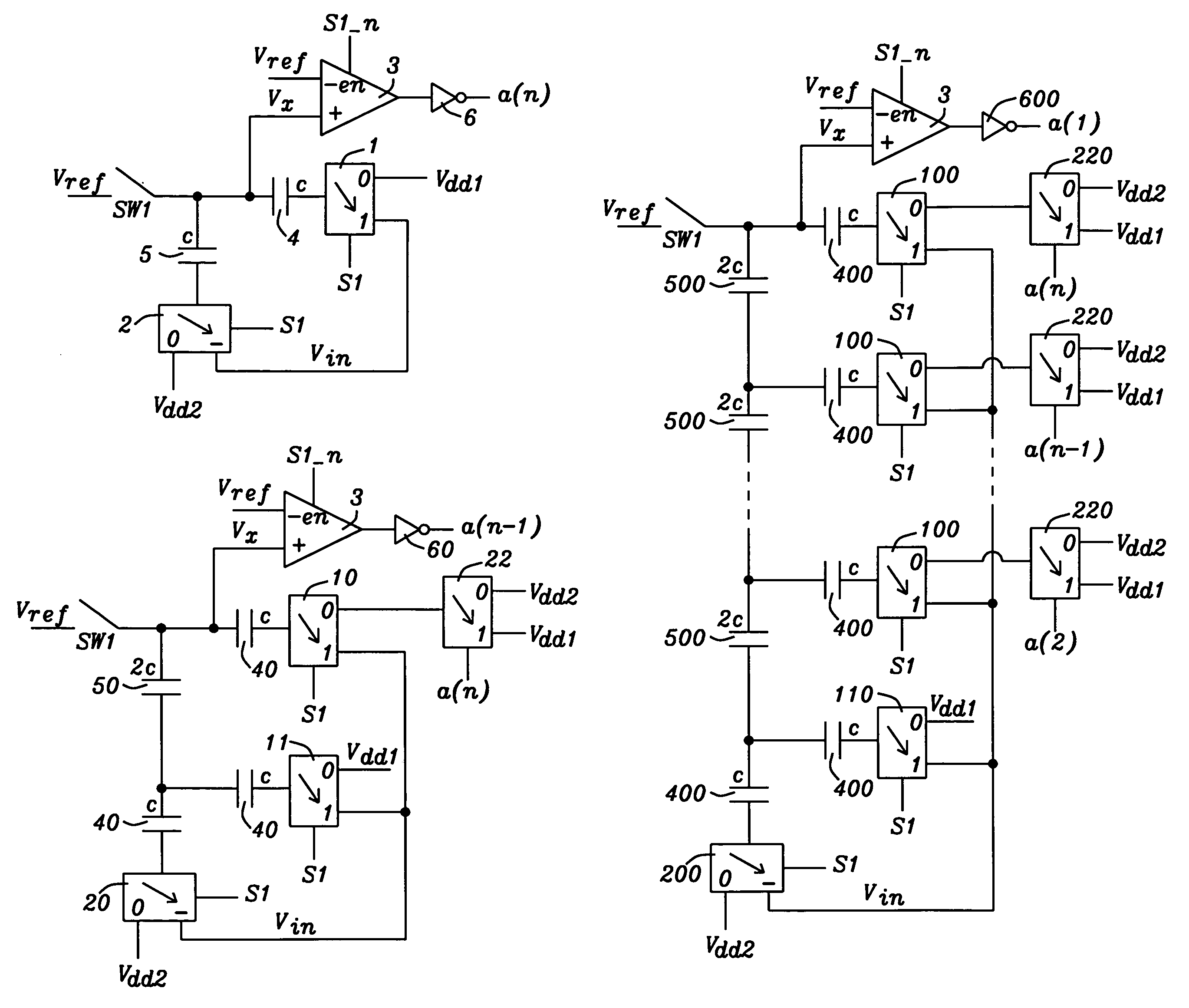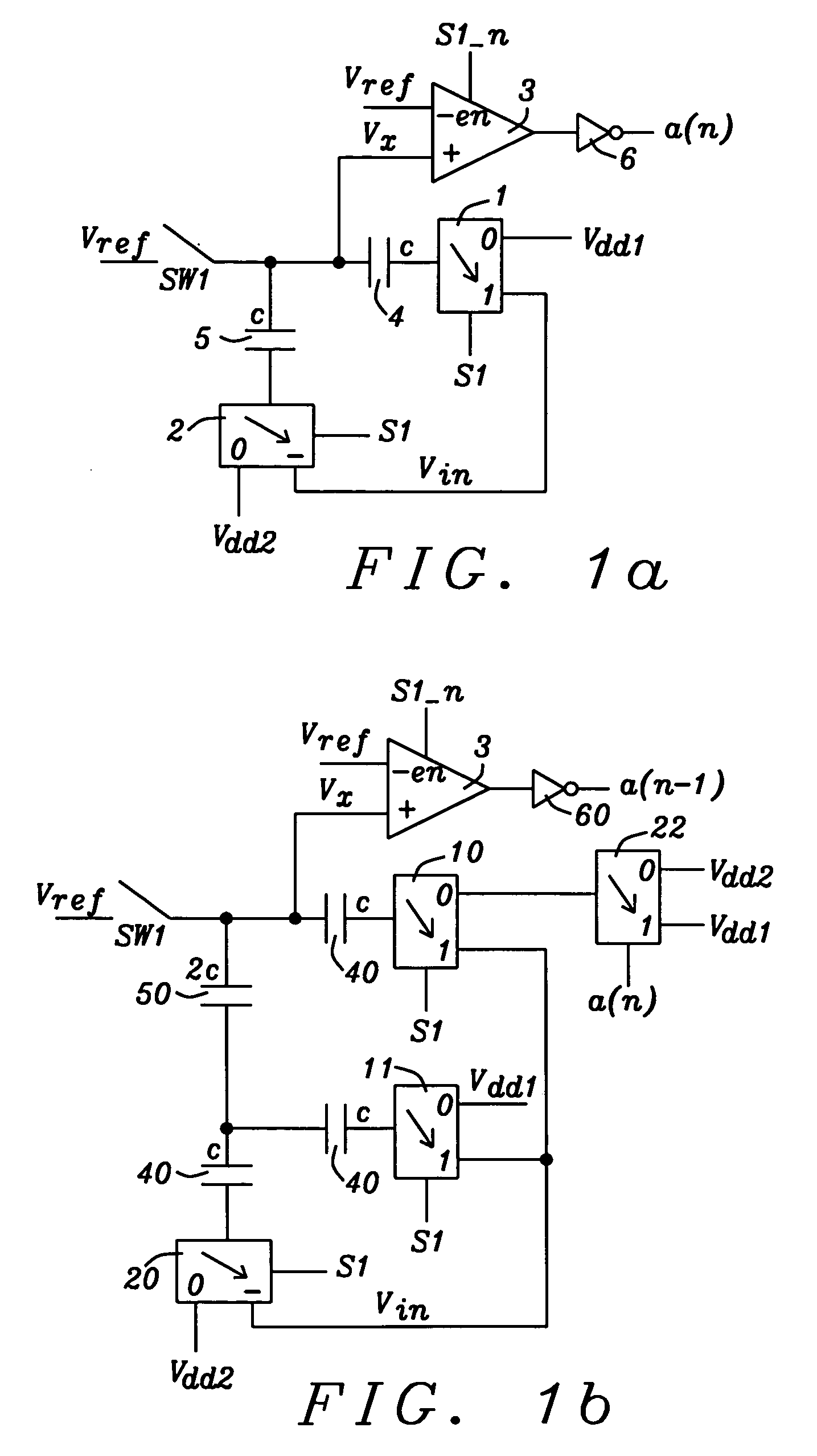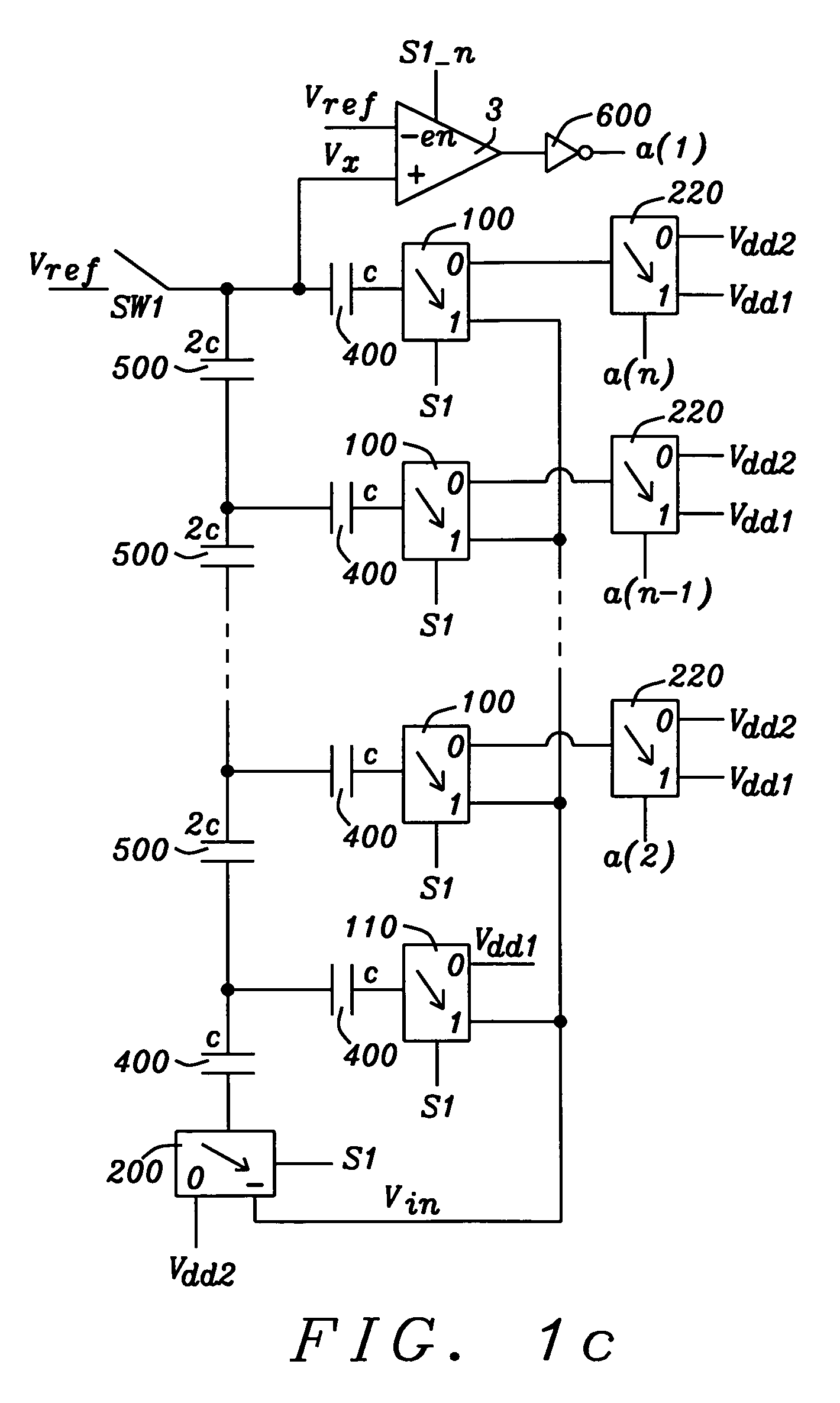Domino asynchronous successive approximation ADC
a technology adc, applied in the field of asynchronous successive approximation (asa) adc, can solve problems such as power consumption, and achieve the effect of flexible architectur
- Summary
- Abstract
- Description
- Claims
- Application Information
AI Technical Summary
Benefits of technology
Problems solved by technology
Method used
Image
Examples
Embodiment Construction
[0018]The preferred embodiments of the present invention disclose a novel asynchronous successive approximation (ASA) analog-to digital converter (ADC).
[0019]Analog-to-digital converters (ADCs) are commonly converters synchronized with a system clock. Converters with a fixed conversion time are subject to errors due to metastability. These errors will occur in all converter designs with a fixed time for decisions, and are potentially severe. Another advantage of asynchronous ADCs is that problems linked to increased clock frequencies can be avoided such as e.g. complications regarding the clock effects on EMI, power dissipation, and average-case performance.
[0020]FIGS. 1a–c show block diagrams of selected blocks of the asynchronous successive approximation (ASA) ADC of the present invention. The ASA ADC converts an analog voltage signal Vin to an n-bits digital signal. This number n could be any suitable number. The resolution of an ADC is increased by increasing the number n of dig...
PUM
 Login to View More
Login to View More Abstract
Description
Claims
Application Information
 Login to View More
Login to View More - R&D
- Intellectual Property
- Life Sciences
- Materials
- Tech Scout
- Unparalleled Data Quality
- Higher Quality Content
- 60% Fewer Hallucinations
Browse by: Latest US Patents, China's latest patents, Technical Efficacy Thesaurus, Application Domain, Technology Topic, Popular Technical Reports.
© 2025 PatSnap. All rights reserved.Legal|Privacy policy|Modern Slavery Act Transparency Statement|Sitemap|About US| Contact US: help@patsnap.com



